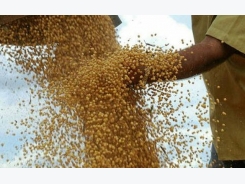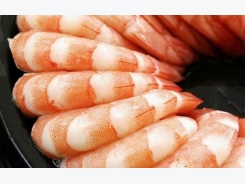The search for better baby shrimp

In recent years, Vietnam has made great progress in breeding brackish-water shrimp, becoming the world’s third largest shrimp exporter with annual value of more than US$3 billion. However, the Vietnamese shrimp sector has also had to cope with challenges due to low quality of baby shrimp.
An intensive shrimp farming model developed by the Truc anh Production and Trading Company Limited
Poor infrastructure
According to the Directorate of Fisheries under the Ministry of Agriculture and Rural Development, brackish-water shrimp (black tiger shrimp and white-leg shrimp) are bred in 30 cities and provinces. Last year, Vietnam exported shrimp to 90 markets, earning more than US$3 billion. About 2,300 baby shrimp production facilities have been formed, concentrated in Ninh Thuan, Binh Thuan, Khanh Hoa, Ca Mau and Bac Lieu provinces. About 400 other facilities specialize in producing and importing feed for aquatic animals and environmental treatment products for use in aquaculture. Apart from these, Vietnam has about 350 shrimp processing facilities with annual capacity of more than 1.4 million tonnes.
The Directorate of Fisheries said that Vietnamese shrimp sells very well in the world market at stable prices. Salinity intrusion and sea level rise scenarios will be a challenge but also create opportunities for Vietnam to turn areas affected by salinity into shrimp ponds, adapting itself to climate change.
Apart from its potential and advantages, the Vietnamese shrimp sector has problems that must be resolved to promote its further development. According to Le Anh Xuan, Chairman of the Board at NG Vietnam, a seafood company, the Vietnamese shrimp sector still lacks quality baby shrimp. All baby shrimp production facilities still use naturally-grown or imported parent shrimp. Moreover, poor infrastructure and technological weaknesses have hindered the production of high-quality and bio-safe baby shrimp for supply to large-scale aquaculture areas.
Bac Lieu Agriculture Promotion Center Director Huynh Quoc Khoi said the shrimp sector still lacks production chains. Shrimp farmers do not want to cooperate with each other, and businesses are not willing to play the role of a bridge between them.
Parent shrimp production
Tran Cong Khoi, Deputy Director of the Directorate of Fisheries’ Department of Aquaculture, said the Directorate of Fisheries had proposed various measures to promote the breeding of brackish-water shrimp. Specifically, infrastructure must be upgraded and power supply improved in areas where shrimp is bred according to industrial methods. Single shrimp breeding facilities should be gathered to establish cooperatives. Shrimp breeding areas should be numbered to facilitate management and origin tracing.
Information technology should be applied in management and production. In addition, it is necessary to assign specialized agencies to promote research and select suitable shrimp breeds for use as parent shrimp, looking towards self-sufficiency in parent shrimp production by 2025. The Directorate of Fisheries will continue trade promotion activities to strengthen the position of Vietnamese shrimp in traditional markets and promote exports to new markets, such as the Middle East, China and Southeast Asian countries.
Tran Dinh Luan, Deputy Director of the Directorate of Fisheries, said the Ministry of Agriculture and Rural Development had established a steering committee for research and selection of parent brackish-water shrimp breeds originating from Vietnam. Apart from its research units, the ministry has created favorable conditions for businesses to be involved in the research and selection process. “Hopefully, from now to 2020, Vietnam will be able to produce parent shrimp meeting bio-safety requirements and become self-sufficient in this field. This is necessary for Vietnam to raise annual shrimp export value to US$10 billion by 2025,” Tran Dinh Luan said.
To develop the shrimp sector in a sustainable manner, in the opinion of National Agriculture Promotion Center Acting Director Kim Van Tieu, the Ministry of Agriculture and Rural Development should maintain tight control over the quality of baby shrimp as well as bio-products, antibiotics and environmental treatment products used in aquaculture. Further research should be conducted to select suitable shrimp breeds with low feed conversion ratios, which can grow rapidly and are disease-free.
Shrimp farmers should apply new breeding techniques and cooperate with each other to develop large-scale production models.
NG Vietnam Management Board Chairman Le Anh Xuan:
A lack of quality baby shrimp production facilities is a major hindrance to the development of the Vietnamese shrimp sector.
Related news
Tools

Phối trộn thức ăn chăn nuôi

Pha dung dịch thủy canh

Định mức cho tôm ăn

Phối trộn phân bón NPK

Xác định tỷ lệ tôm sống

Chuyển đổi đơn vị phân bón

Xác định công suất sục khí

Chuyển đổi đơn vị tôm

Tính diện tích nhà kính

Tính thể tích ao



 Shrimp prosper in mixed ponds
Shrimp prosper in mixed ponds  As prices fall, warmwater shrimp claims dominance on…
As prices fall, warmwater shrimp claims dominance on…